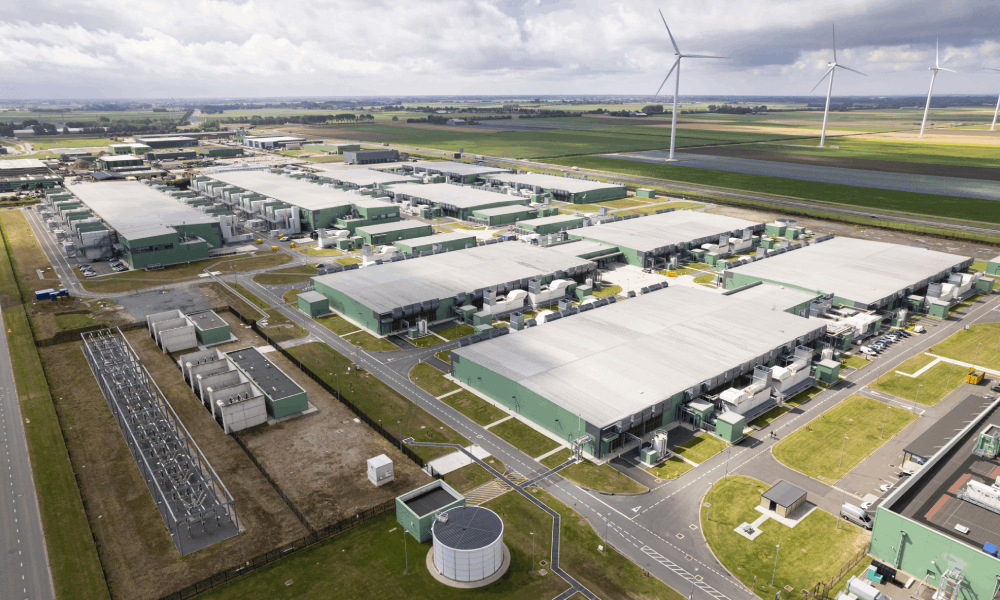Six ways to leverage AI for sustainable development
Businesses can leverage AI technology as a medium for digital sustainability to achieve the United Nations Sustainable Development Goals (SDGs)
In the next ten years, it is expected that advancements in artificial intelligence (AI) technology will play a key role in increasing efficiencies and augmenting human capabilities to help achieve all 17 of the SDGs to mitigate the impact of climate change. While AI has a bright future, it also creates several challenges, particularly given the vast energy and resources required by the data centres that develop and power it. The pertinent question remains: For all the “good” AI applications can do, what role can (and should) AI play in driving progress towards achieving the SDGs by 2030?
“AI will disrupt existing dynamics, and those benefiting from existing dynamics by access to information or resources will resist this disruption. Organisations must communicate that this is not a zero-sum game but a win-win solution," says Scientia Professor Shan Pan, AGSM Scholar and Deputy Head of School (Research) at the School of Information Systems and Technology Management at UNSW Business School. According to the findings of his recent paper, Artificial intelligence for digital sustainability: An Insight into domain-specific research and future directions, co-authored with Associate Professor Rohit Nishant, Laval University in Canada, there are six key areas where the application of AI can directly help to achieve the SDGs.

Bridging the gap between AI and digital sustainability
The reality is stark: Global carbon emissions must be slashed by 45 per cent before 2030 and ultimately brought to net zero by 2050 to fulfil the commitments outlined in the Paris Agreement and prevent global temperatures from exceeding a 1.5°C increase. Going beyond this threshold could precipitate the unravelling of our delicate societal framework – a particularly alarming prospect in the aftermath of the upheaval witnessed during the covid pandemic.
Over the past few years, researchers have put forward the concept of digital sustainability, which is defined as “the organisational activities that seek to advance the SDGs through creative deployment of technologies that create, use, transmit, or source electronic data”.
In a nutshell, digital sustainability involves applying social, economic, and environmental stewardship principles to digital products, services, and data to services and products online. Designers and developers might interpret this as a call to deliver more resource-efficient digital products, and they would be right.
According to Scientia Professor Pan, he and his co-author were inspired to conduct a study to address the gap in the existing literature on AI’s role in driving digital sustainability. This is incredibly important, as AI will release resources for new initiatives and explorations. “We have been working on AI and strongly believe in AI's potential to help achieve digital sustainability. However, we realised that there is a dearth of pieces that examine how AI can foster digital sustainability and thus, motivated, we undertook this project,” he said.
Read more: Digital sustainability: technology solutions to climate change
Specifically, while other studies in recent years have looked into the role of AI in sustainability research, few studies have tackled the role of AI as a medium for digital sustainability head-on. “Digital sustainability implies using digital technologies, specifically emerging ones such as AI, to achieve social, economic, and environmental sustainability. AI, a general-purpose disruptive technology, can open new avenues for improving economic, social, and environmental performance,” explained the Scientia Professor.
In the paper, which involved an extensive literature review, the authors find digital sustainability offers a way for Information Systems (IS) to connect sustainability and digital technologies. IS can act as a bridge by using management theories to explore advanced technologies, which have mainly been studied for their digital capabilities. To directly impact sustainable development, the IS field should concentrate on specific advanced technologies and the 17 different SDGs. This approach can link SDG research to areas like health, environment, poverty, and mobility, giving the IS field a clear focus. Moreover, by concentrating on SDGs, the IS field can help tackle complex issues often requiring input from various disciplines.
According to Associate Professor Nishant, AI researchers should treat this as an “Oppenheimer moment”. He explained: “We are not trying to hype this technology; we are merely suggesting that whenever we launch new AI or use it, we ask ourselves whether it will advance society as a whole or not. We should not be dictated by gains at the individual or firm level.”

Six areas where AI is driving progress towards sustainable development
The researchers reviewed thousands of existing papers on AI that related to digital sustainability. They focused their search on papers within areas like business, management, information, and library science, published from 2015 onwards (since the SDGs were formulated in 2015). Initially, they found 11,174 relevant sources, including journal articles, conference papers, and book chapters, but they narrowed it down to 1,113 studies for closer examination.
The researchers then looked at the abstracts of these studies to see if they talked about AI, machine learning (ML), and specific AI techniques like deep learning or neural networks in the context of sustainable development goals and digital sustainability. They excluded studies that only used machine learning for literature reviews or data analysis. They also removed some studies that focused on analysing trends in AI-related research. They were left with 41 studies they considered most relevant to the research topic.
From there, they uncovered the key areas where AI is most used, which include marketing, supply chain stakeholders, human resource management, finance, contextual studies, healthcare, and technology and innovation. From this, the researchers identified six key dimensions where AI skills translate to digital sustainability: sense-making, relationships among actors in the supply chain, green creativity skills, metrics, strategies, and AI tool improvement.
Learn more: A data-driven system that optimises sustainability initiatives and investments
“Generative AI will be increasingly integrated in creating and analysing sustainability reports,” explained Professor Nishant. “We are considering examining how to bring temporality through generative AI in metrics for digital sustainability.”
But according to the researchers, the most critical area of the six mentioned above is creativity. “Employees who can leverage AI to develop creative solutions for measuring and mitigating environmental impact would be a strong company asset. Such employees would know how to use knowledge and information at their disposal through the generative AI tools for developing an ingenious solution,” explained Scientia Professor Pan.
Associate Professor Nishant also explained that it will become increasingly crucial for organisations to educate and train their employees to use AI tools. For example, quickly generate novel ideas and content, including codes. “However, this means that those who are experts might be more valuable when a complex problem requires effective leveraging of AI. Companies should train their employees on leveraging AI, and those who show aptitude for specific domains should be trained as experts,” he said.
But of course, a fundamental question is what will be considered an original idea. AI, specifically generative AI, allows humans to arrive at new permutations and combinations of existing information, but can they be considered original ideas? The most recent development has been a landmark ruling in the US, where a court has said that AI-generated art cannot receive copyrights, which poses several grey legal and ethical questions that require further research and discussion.

Tackling the environmental impact of AI algorithms
However, businesses need to be cautious about unintended consequences such as the ecological footprint of AI. Data centres and transmission networks are responsible for nearly 1 per cent of energy-related greenhouse gas emissions, contributing to rising global temperatures and climate change. Past research has found that AI can facilitate the achievement of 134 targets across all the SDGs, but it can also inhibit the achievement of 59 targets.
AI models and the data centres powering them have a huge carbon footprint. Hence, there is a need to prioritise using AI models for societal challenges like climate change. “In one of the prior published practice articles, researchers called it an AI carbon footprint problem. In future, we are planning to provide some theory-grounded framework to advance the use of AI for grand challenges over hedonic use,” said Associate Professor Nishant. “At the end of the day, technology will be good or bad based on what we make of it. Humans have a performative agency.”
Subscribe to BusinessThink for the latest research, analysis and insights from UNSW Business School
For businesses interested in leveraging AI for digital sustainability, what steps can they take to maximise the positive impacts of AI in their decision-making while minimising potential risks? According to Associate Professor Nishant, a good starting place is to create a small team that will be mandated to experiment with AI models (on a small scale) and use this experimentation to develop an “AI use policy for the entire organisation”.
Professor Shan Pan is a Scientia Professor, AGSM Scholar and Deputy Head of School (Research) at the School of Information Systems and Technology Management at UNSW Business School. He is also the Founder and Director of the Digital Sustainability Knowledge Hub at UNSW Sydney. For more information about the role of AI in digital sustainability, and how this drives progress towards achieving the UN SDGs, read the full paper, or contact the researchers directly.
